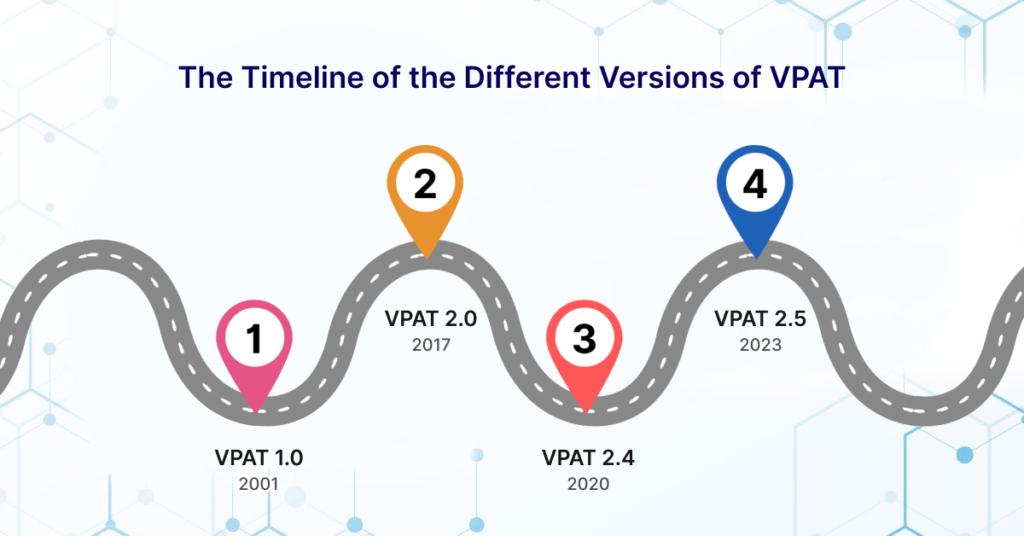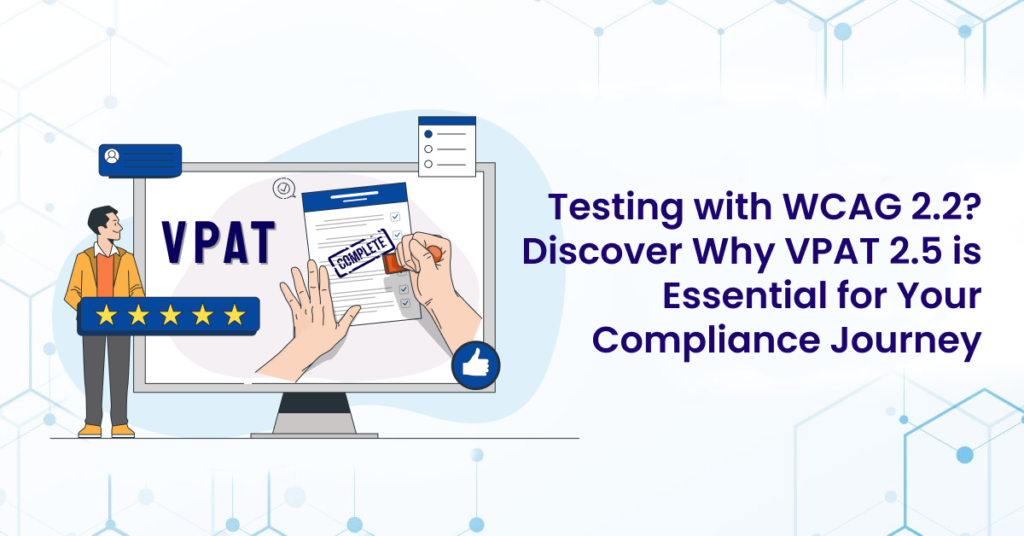If you’re planning to work with the US government or want to showcase your commitment towards accessibility, then knowing about the Voluntary Product Accessibility Template (VPAT) is essential. This document outlines the accessibility standards that your product or service meets, and it can help you stand out as a business owner.
If you don’t know about VPAT and its new version i.e. VPAT 2.5, don’t worry, we have got you covered. In this blog we will discuss VPAT 2.5, its latest features, and whether you should consider moving to the newer version. But before that, let’s first familiarize ourselves with the basics of VPAT and its history.
What is a VPAT?
The VPAT serves as an important framework for evaluating the accessibility of Information and Communication Technology (ICT) products. This standard, developed by the Information Technology Industry Council (ITI), standardizes how product accessibility is reported, focusing on adhering to established accessibility standards like Section 508, EN 301 549, and the Web Content Accessibility Guidelines (WCAG).
The History of VPAT
In 2001, ITI and the General Services Administration, the U.S. government’s central procurement office, developed the VPAT to tackle the challenge of matching ICT product features to Section 508 accessibility requirements using a checklist.
Originally conceived as a means to assist in the procurement of accessible ICT products, the VPAT has evolved over the years. It has consistently adapted to changes in technology and accessibility standards, reflecting a commitment to making digital accessibility a universal norm.

Why the Need for a Newer Version of VPAT?
As technology advances, so do the challenges and opportunities in digital accessibility. VPAT 2.5 is a response to evolving technologies, aiming to provide a more detailed and updated framework for evaluating and reporting on the accessibility of ICT products. For example, it now includes new success criteria mentioned in the WCAG 2.2, which was released in October 2023.
The Key Features of VPAT 2.5
VPAT 2.5 introduces key changes to align the standards in its various editions more closely.
- The 508 Edition remains aligned with Section 508 requirements.
- The EU Edition has been updated to incorporate the latest EN 301 549 standards.
- The WCAG Edition has expanded to include WCAG 2.2, along with the previous versions 2.1 and 2.0.
- Adjustments in the INT Edition reflect the updates made in the other editions.
- A significant enhancement in each edition of VPAT 2.5 is the modification of the reporting structure. The category “supports with exceptions” has been updated to “partially supports”.
Furthermore, VPAT 2.5 features a new column specifically for in-depth explanations of the conformance levels. This allows for a more detailed description of how each digital element meets the specified criteria, considering their unique characteristics.
Should you move to VPAT 2.5?
Moving from VPAT 2.4 to 2.5 represents a step towards aligning with the newest accessibility benchmarks like WCAG 2.2. This shift is particularly significant for organizations targeting .gov or .edu sectors, emphasizing their adherence to current standards.
The decision to upgrade should be well-considered, factoring in your market, audience, and regional regulatory demands. While VPAT 2.4 may be adequate temporarily for some, especially if their digital content already meets its criteria, looking ahead, VPAT 2.5 is the strategic choice for keeping pace with the dynamic digital environment.
Wrapping Up
Your switch to VPAT 2.5 should align with market transitions toward WCAG 2.2, which might require some time. Nonetheless, for those developing new digital solutions or updating existing ones, embracing WCAG 2.2 and VPAT 2.5 is a wise move. It involves minimal additional effort or cost, yet significantly showcases your commitment to contemporary digital accessibility standards.
Ready to make the Move!
Looking to get a VPAT for your Business? Many businesses opt to have their VPAT crafted by accessibility experts like Pivotal Accessibility, minimizing the risk of errors and ensuring the highest standard of compliance. Contact us to explore how we can assist you in transitioning to VPAT 2.5 effectively.

